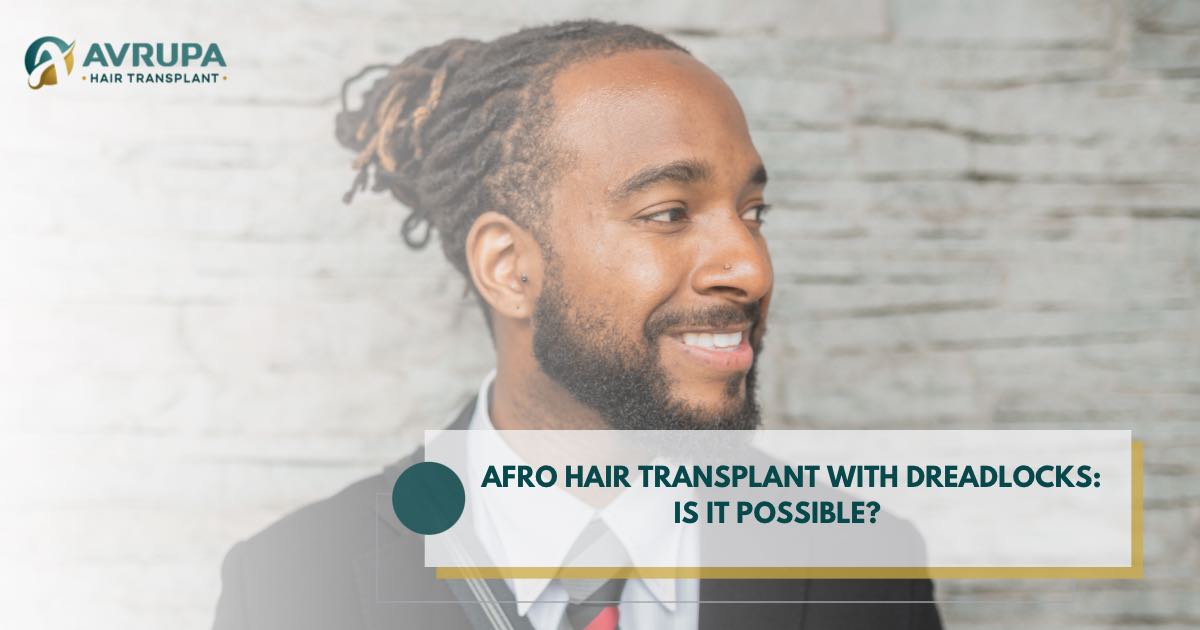When you wear dreadlocks, safe FUE requires planned access to the donor zone. Your surgeon will choose the approach that best balances discretion, graft capacity, and surgical visibility through one of these methods:
A) Full donor trim (most efficient)
- Back/sides trimmed to ≈0.5–1.5 mm.
- Pros: fastest, best visibility; allows larger sessions.
- Cons: visible trim until hair regrows.
B) Micro-strip “window” shave
- Several narrow, irregularly spaced windows are shaved under longer hair to hide them.
- Pros: good balance of access and discretion.
- Cons: still some trimming; planning is meticulous.
C) True “no-shave” FUE
- Individual follicles are trimmed in place; surrounding hair remains long.
- Pros: maximum discretion.
- Cons: slower, technically demanding, and often capped at smaller graft numbers; commonly <1,000 in some clinics. Best for touch-ups, not mega sessions.
D) Supplemental beard/body donor (case-by-case)
- Useful when scalp donor is limited; texture matching and blend strategy are crucial.
Technique Choices for Afro Hair Transplant with Dreadlocks
- FUE is usually preferred to avoid a long linear scar—especially relevant if you’re keloid-prone. Success depends on punch selection and motion adapted for coils.
- DHI (implanter-pen placement) can help with precise angle/depth during placement in tightly coiled hairlines, but outcomes depend on graft extraction quality feeding the pens. Even if you use DHI pens perfectly, results will only be as good as the grafts you harvested. If extraction damages or dries grafts, the pens can’t “fix” that. Conversely, high-quality extraction plus careful placement (with or without pens) is what drives survival and natural density.
- FUT (strip) may be considered selectively, but linear scars can be problematic in keloid-prone patients; many Afro-hair cases are managed with FUE for this reason.
Pre-op Prep for Patients with Dreadlocks (what to do and when)
As your hair transplant is approaching, you will need to set a clear pre-op routine that pauses traction, confirms your diagnosis (e.g., rules out active CCCA), and finalizes donor-access logistics so surgery day is seamless and your locs stay protected.
8–12 weeks before
- Reduce/stop tension: pause tight retwists, heavy extensions, or styles that pull. The goal is to have a calm scalp and stop traction triggers.
- Dermatology clearance if needed: see a dermatologist if there are any signs of CCCA or scarring (tenderness, scaling, spreading); biopsy will be taken if indicated.
4–6 weeks before
- Agree on donor access plan (full trim vs window vs no-shave) with realistic graft targets.
- Optimize scalp health: gentle cleansing; address dandruff/folliculitis if present.
7–14 days before (per clinic protocol)
- Review medication holds and lifestyle guidance with your surgeon (e.g., anticoagulants, supplements, nicotine—timing individualized).
- Wash/clarify the scalp and locs; avoid heavy oils/products on donor/recipient zones shortly before surgery to improve visibility and asepsis (clinic-specific).
Day of surgery
- Locs are sectioned and secured away from donor/recipient zones; the planned windows (or full trim) are performed, and extraction proceeds under magnification.
Styling timeline after transplant (loc-friendly, tension-free)
The big rule: no traction on recipient sites until grafts are firmly anchored and early healing is complete.
Days 10–14
- Most grafts are secure; normal (gentle) washing resumes. Still avoid tension and any manipulation that twists/pulls on grafted zones.
Weeks 3–6
- You can wear locs loosely away from the transplanted areas (e.g., soft, low-tension wraps). No retwists or tight updos yet; avoid anything that creates localized pull. Evidence-based prevention advice for traction supports minimizing tight styles during this period.
Weeks 6–12
- Discuss a light, partial retwist strategy with your surgeon that spares grafted zones and uses minimal tension. Many clinics green-light cautious styling after the 6–8 week mark if healing is uneventful, but this is individualized.
3–4 months
- Early regrowth appears; you can gradually return to more typical maintenance, still avoiding heavy pull on transplanted hairlines/temples.
6–12+ months
- Maturation and thickening. You can evaluate density and decide on further styling freedom or minor touch-ups if planned.
Why so conservative? Tight styles are a known risk for traction alopecia, and freshly transplanted follicles need months to integrate. Pair the graft-anchoring data (~9–14 days) with long-term traction avoidance to protect your investment.
What Results to Expect (and how locs influence aesthetics)
- Density illusion favors coils. Afro hair’s curl and caliber can create full-looking coverage with fewer grafts. This can be great for donor conservation, especially when graft numbers are capped by no-shave methods.
- Hairline design matters. Angle, direction, and micro-irregularity are critical to a natural frame—particularly where traction once thinned edges.
- Session size may be limited if you insist on no-shave FUE a multi-stage restoration may be needed.
Risks & safeguards (specific to loc wearers)
- Higher keloid risk in some patients → share any personal/family history; discuss test incisions and scar-minimization protocols.
- Transection in coiled follicles → ask about punch type, RPM/oscillation, and Afro-case transection rates.
- Wrong diagnosis (active CCCA) → defer surgery until clinically inactive; biopsy when indicated.
FAQs
Can I keep my dreadlocks for hair transplant?
Usually yes but expect donor trimming (full or window). True no-shave FUE is possible but slower and typically limited to smaller sessions, so plan accordingly.
When can I retwist?
Protect grafts from any traction until at least 6 months, and reintroduce retwists gradually, with surgeon clearance—especially if the hairline/temples were transplanted. Base this on healing plus the well-documented role of tension in traction alopecia.
Will a window shave be visible?
Windows are placed so that surrounding hair covers them; they grow out in weeks. This approach balances discretion with surgical efficiency.
Bottom Line
Dreadlocks don’t rule out an Afro hair transplant—they just require smarter planning. When you confirm the right diagnosis (and rule out active scarring conditions like CCCA), screen for keloid risk, and choose a surgeon skilled with coiled follicles, you can restore edges or density without sacrificing your loc journey. The key decisions—full trim vs. window shave vs. true no-shave FUE, and a tension-free styling timeline—protect graft survival and help your results age well.
